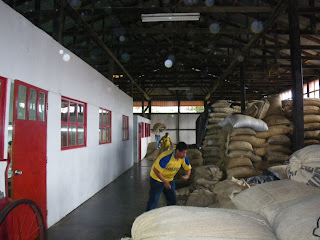 |
| mooring chain |


The evening looked like a normal thunderstorm, but things quickly deteriorated. We were on a mooring ball at the time and felt more safe than being at anchor in this estuary with strong currents When the storm started Deena was on deck. She started pulling in the sun shades that were taking a beating in the 30 knot wind. Rick was below closing windows and hatches to stop the horizontal rain. Then we were hit by a 85+mph wind (hurricane force) later called a micro-burst. Our normally horizontal, hoisted dingy was blown vertical and the boat heeled about 20 degrees. Unfortunately it also broke the mooring chain we were attached to. At the moment we realized we were adrift, Talaria collided with the vacant boat S/V Hotspur moored directly behind us. We started the engine but the anchor from Hotspur was caught on our life lines preventing us from separating the 2 boats in the strong wind and waves beating us together. The mooring field workers jumped onto our boat to help us get free from Hotspur. We proceeded to the marina and assessed the damage to the hull, making sure we were not in danger of taking on water. Rick and Ben from S/V Knee Deep went out in a dinghy to make certain that Hotsupr had no damage that could cause it to sink. Repairs are under way.
There is a lot to be said for the local people. They lost roofs, boats, docks and a lot more. However, they quickly worked together to help each other out and make sure everyone was taken care of.

















































